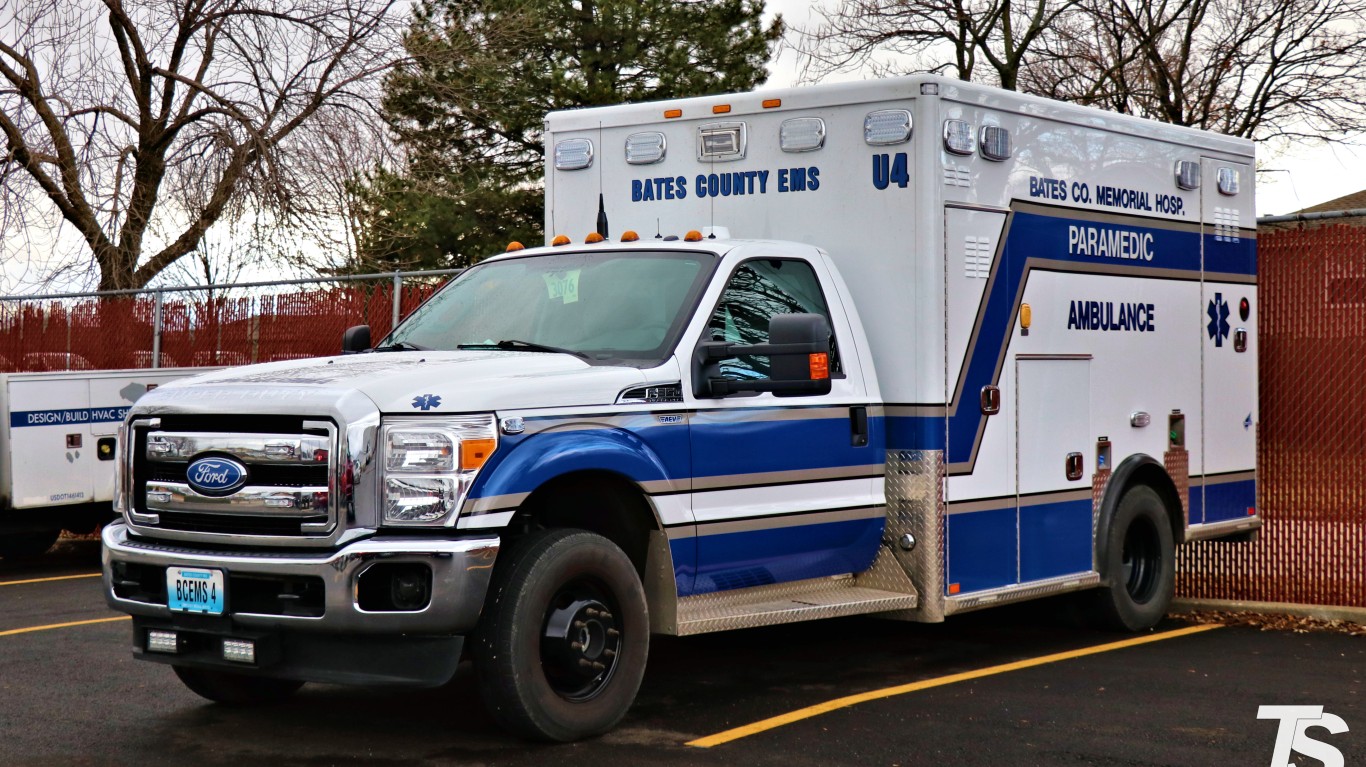Health and Healthcare
Don't Get Sick Here: States With the Most Deaths From Medical Care Complications

Published:

There were 21,345 deaths due to complications of medical and surgical care in the U.S. from 2018 to 2021, according to the Centers for Disease Control and Prevention. These are deaths to patients that are a direct result of medical and surgical care such adverse drug reactions, contracting a serious infection, bleeding from surgery, and more. Some are direct results of medical staff errors.
The number of deaths reported, however, may be considerably lower than it actually is, according to different research. For example, one 2016 study from Johns Hopkins University suggests that medical errors are the third-leading cause of death in the United States and that such deaths are significantly under-reported and “under-recognized.” Because many of the errors are not necessarily due to bad doctors, the study recommends addressing “systemic problems, including poorly coordinated care, fragmented insurance networks, the absence or underuse of safety nets,” and more.
So which are the states where deaths from complications of medical and surgery care are highest? To determine that, 24/7 Wall St. reviewed mortality data from the CDC’s WONDER database. States were ranked based on the number of deaths due to complications of medical and surgical care per 100,000 state residents from 2018 to 2021.
In the 49 states on the list (South Dakota was excluded as the CDC deemed the data unreliable), there were anywhere from 0.7 deaths from such compilations per 100,000 people in California to 2.61 deaths per 100,000 people in Wyoming. Mississippi, Arkansas, New Mexico, and Kansas round out the five states with the most deaths due to complications per capita. (Also see:History’s Worst Medical Scandals.)
Hawaii, Massachusetts, New York, and wisconsin round out the five states with the lowest reported deaths from medical care complications per capita.
To determine the states with the most deaths from complications of medical and surgery, 24/7 Wall St. reviewed data on mortality due to medical complications from the CDC’s WONDER database. States were ranked based on the number of deaths due to complications of medical and surgical care per 100,000 state residents from 2018 to 2021. Mortality data is age-adjusted. Mortality data for South Dakota was unreliable per the CDC and was excluded from our analysis.
Supplemental data used to calculate the average dollar amount of medical malpractice payouts per resident from 2010 to 2022 are from the National Practitioner Data Ban of the U.S. Department of Health & Human Services and the U.S. Census Bureau’s Population and Housing Unit Estimates program and are inflation adjusted. Data on median annual salary for health care practitioners and technical occupations are from the Bureau of Labor Statistics Occupational Employment and Wage Statistics program and are for 2022. Data on the percentage of the civilian noninstitutionalized population with private health insurance is from the U.S. Census Bureau’s 2022 American Community Survey.

















































The last few years made people forget how much banks and CD’s can pay. Meanwhile, interest rates have spiked and many can afford to pay you much more, but most are keeping yields low and hoping you won’t notice.
But there is good news. To win qualified customers, some accounts are paying almost 10x the national average! That’s an incredible way to keep your money safe and earn more at the same time. Our top pick for high yield savings accounts includes other benefits as well. You can earn up to 3.80% with a Checking & Savings Account today Sign up and get up to $300 with direct deposit. No account fees. FDIC Insured.
Click here to see how much more you could be earning on your savings today. It takes just a few minutes to open an account to make your money work for you.
Thank you for reading! Have some feedback for us?
Contact the 24/7 Wall St. editorial team.